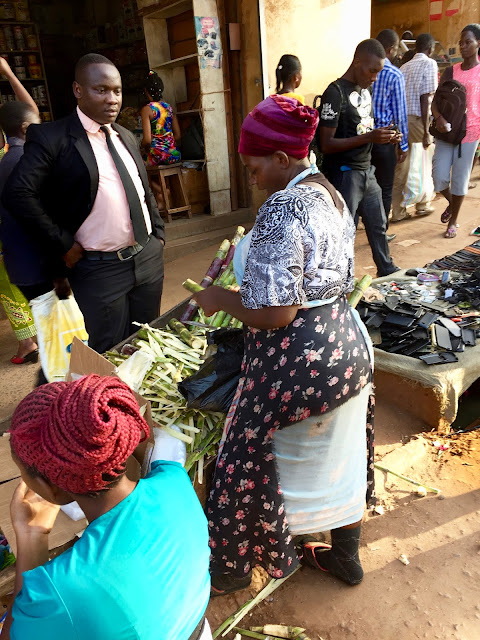Now that I'm back in the country, I can say this summer seemed even better than the last. The traveling was easier, and the places and people were fantastic. Packing in a carryon backpack was a great choice.
Wiping out while running and destroying my phone. I think I would've rather broken an arm, but here's to another summer of solo international travel without any phone. I got covered in scrapes but eventually managed to sew up all the holes in my leggings.
Dropping the entirety of my anti-malarial pill collection into the sink. When I fished them all out they'd turned from a nice pink color to an acid yellow color. At this point I decided maybe I should start actually using my mosquito net above my bed at night.
Simultaneous upper and lower GI infections. It's really been bound to happen since I try absolutely everything Ugandan street vendors have to offer. The worst part was not having an appetite for over a week and feeling like I was losing all my muscle mass.
Losing my yellow fever vaccine certificate before entering the country where it's required. To enter Uganda, one must present the certificate as proof of vaccination of yellow fever. Sometime between Toronto and Entebbe, I stashed mine in my passport and then lost it. My first introduction to the country was convincing the health officer on the tarmac to let me in regardless. (To my relief he was so convinced, and I did not have to pay to be revaccinated in the airport.)
Swimming in the Nile where there's schistosomiasis. It was totally worth it. I bought the anti-parasite medicine while still in Uganda, because it was incredibly cheap so hopefully it's not counterfeit.
Forgetting to apply for my Indian visa. Instead of applying the minimum 3 days prior to entry, I applied the night before. To board the plane out of Uganda, I had to pull out my laptop to convince the attendant that I had at least applied for the visa. When I got to the immigration officer's counter in India, I had no idea if it had been accepted yet or not.
 |
| Wear the dupatta Kashmiri-style |
Dropping the entirety of my anti-malarial pill collection into the sink. When I fished them all out they'd turned from a nice pink color to an acid yellow color. At this point I decided maybe I should start actually using my mosquito net above my bed at night.
Simultaneous upper and lower GI infections. It's really been bound to happen since I try absolutely everything Ugandan street vendors have to offer. The worst part was not having an appetite for over a week and feeling like I was losing all my muscle mass.
Losing my yellow fever vaccine certificate before entering the country where it's required. To enter Uganda, one must present the certificate as proof of vaccination of yellow fever. Sometime between Toronto and Entebbe, I stashed mine in my passport and then lost it. My first introduction to the country was convincing the health officer on the tarmac to let me in regardless. (To my relief he was so convinced, and I did not have to pay to be revaccinated in the airport.)
Swimming in the Nile where there's schistosomiasis. It was totally worth it. I bought the anti-parasite medicine while still in Uganda, because it was incredibly cheap so hopefully it's not counterfeit.
Forgetting to apply for my Indian visa. Instead of applying the minimum 3 days prior to entry, I applied the night before. To board the plane out of Uganda, I had to pull out my laptop to convince the attendant that I had at least applied for the visa. When I got to the immigration officer's counter in India, I had no idea if it had been accepted yet or not.

















































